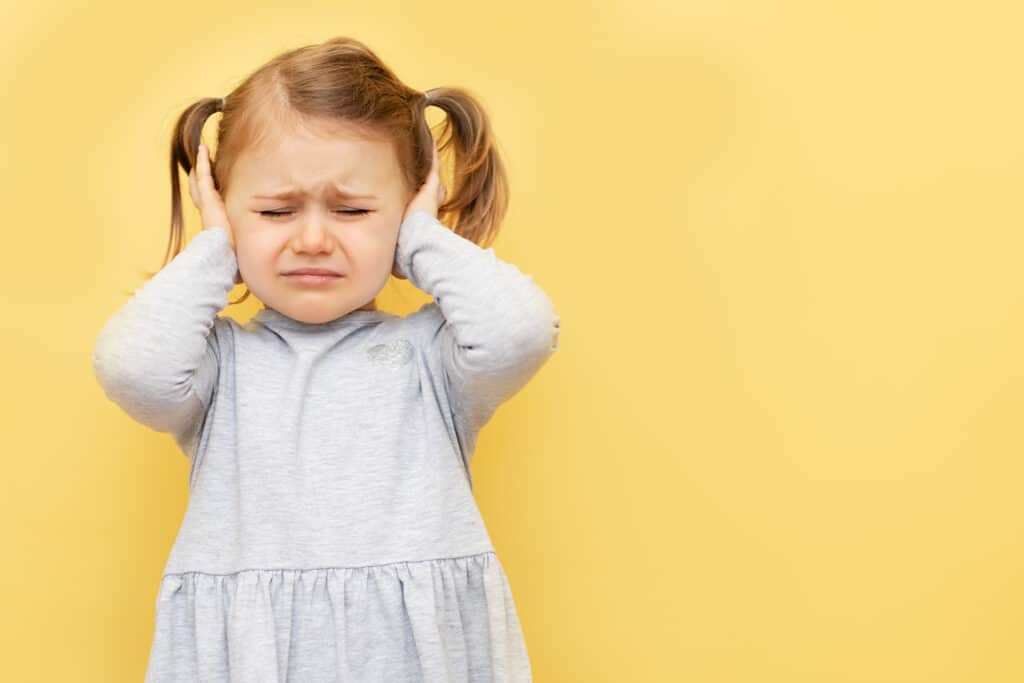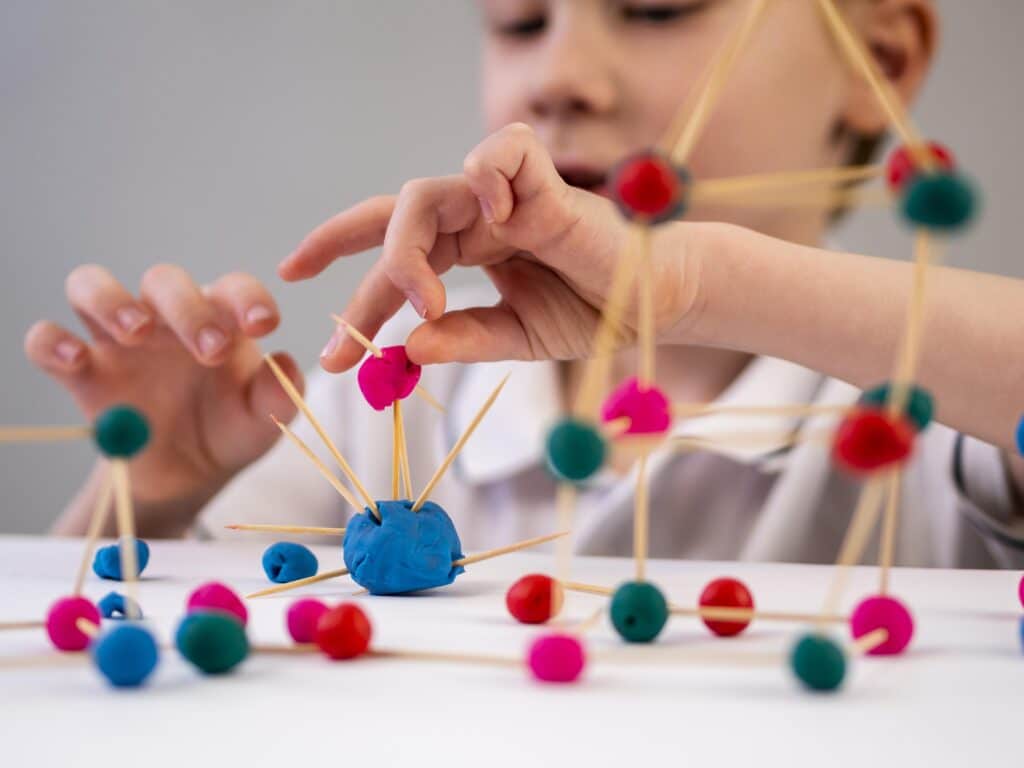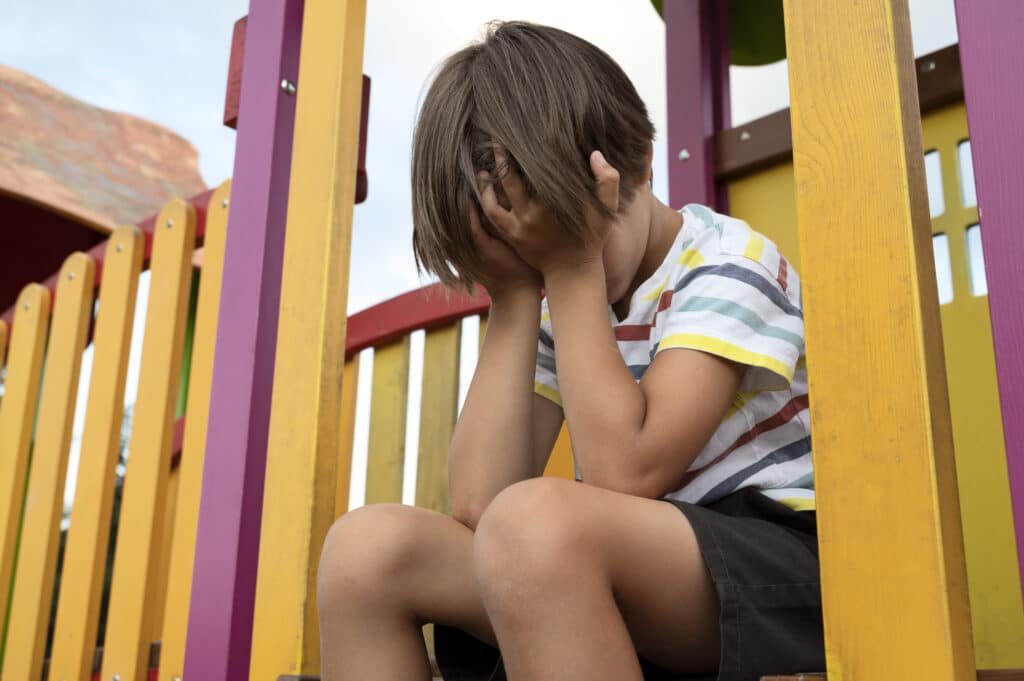Children can display a wide range of behaviors when angry, frustrated, or having meltdowns. A child hitting himself can be distressing to witness, leaving parents wondering why their child engages in such behavior and how to help them cope. In this article, we will delve into why do kids hit themselves, discussing its various aspects and providing insights into understanding and addressing this behavior.
Understanding the Behavior: Why do kids hit themselves?
To understand why children engage in self-harm, it is essential first to explore the broader context of emotional regulation in young children. Meltdowns and temper tantrums are common occurrences during a child’s development. These outbursts are typically triggered by frustration, overstimulation, or an inability to communicate their needs effectively. These are unquestionable underlying factors why toddlers and occasionally older children may resort to hitting themselves; as a means to self-soothe and vent their overwhelming emotions.
1. Emotional Expression and Frustration
One aspect to consider is that hitting oneself might be a coping mechanism for children who have not yet acquired the skills to express their emotions in a more socially acceptable manner. It can be seen as an attempt to release built-up tension or a desperate cry for help when other forms of communication fail.
Parents can start by labeling emotions in everyday situations. When a child experiences an emotion, help them identify and name it. For example, if they are feeling sad because they dropped their ice cream, say, “I see that you’re feeling sad. It’s okay to feel that way when something you like doesn’t go as planned.”
Introduce a wide range of words describing emotions to expand their emotional vocabulary. Use books, movies, or real-life scenarios as opportunities to discuss and identify various emotions. For instance, while reading a story, ask your child how the characters might be feeling and encourage them to describe emotions beyond the basic ones like happy or sad, such as excited, frustrated, or anxious.
2. Sensory Overload and Self-Stimulation
Sensory overload occurs when a child’s sensory system becomes overwhelmed by excessive or intense sensory input from their environment. This can include sights, sounds, smells, textures, and movements. Children who experience sensory overload may exhibit various behaviors, including hitting themselves, as a way to self-stimulate and regulate their sensory needs.

Take the following example, a 3-year-old visiting the amusement park for the first time. The noise, bright lights, and large crowds quickly become overwhelming stressors. The child might feel anxious and frustrated. Lacking the ability to articulate feelings and ask for help, the child starts to hit their head. If the parents label the child as temperamental and agitated in familiar settings, they might mistake this reaction for a temper tantrum and use context-inappropriate techniques to fix the behavior. This example highlights the importance of analyzing the environment and potential stressors that can lead to a child’s reactions before jumping to conclusions or applying consequences.
Additionally, when children do not receive adequate sensory stimulation, they may become understimulated or seek alternative ways to meet their sensory needs. Through exposure to different sensory inputs, such as touch, sight, sound, smell, and movement, children’s brains develop connections and pathways that enable them to process and respond to sensory information effectively.
When children are not provided with sufficient sensory stimulation, they may resort to using their own bodies as a means to seek the stimulation they need. This can manifest in self-stimulatory behaviors such as hitting, pinching, or biting themselves.

By providing appropriate sensory stimulation, parents and caregivers can help prevent or reduce self-stimulatory behaviors. Engaging children in activities that offer a range of sensory experiences, such as playing with textured materials, exploring different scents, engaging in physical activities, or participating in imaginative play, can contribute to their sensory development. These activities promote the development of sensory pathways in the brain and provide the necessary stimulation that supports normal development.
3. Communicating Challenges and Seeking Attention
For some children, verbalizing their emotions or seeking support from others may be challenging. In these instances, hitting oneself may serve as a visible and attention-seeking behavior, indicating distress and signaling a need for assistance.
It is important to recognize that self-hitting in these circumstances is not a deliberate act of harm but rather a reflection of the child’s limited coping mechanisms and emotional expression skills.
Intervening effectively in self-harming behavior requires patience, consistency, and collaboration. Consistency in response to self-harming behavior helps children understand that their caregivers are present, attentive, and committed to their well-being. By consistently reinforcing healthy coping strategies and intervening when self-harm occurs, caregivers send the message that self-harm is not an effective or acceptable way to manage emotions.
👉 Is your child hitting themselves? Find out the top causes for your child’s anger and discover effective solutions for parents in our article. Click here to unlock a path toward a happier, healthier family.
4. Lack of Coping Mechanisms when Scared or Anxious
Self-harm behavior in children can sometimes be triggered by feelings of fear, anxiety, or anger. Fear and anxiety are natural emotional responses that can trigger physiological changes in a child’s body. When a child experiences fear or anxiety, their body activates a complex system known as the “fight or flight” response. The sudden burst of energy and tension in the body can sometimes lead to physical punishment like self-hitting episodes as a coping mechanism.

Prolonged or intense fear and anxiety can be distressing for children. Providing a safe and supportive environment can help children regulate their physiological responses. Calming techniques like deep breathing, relaxation exercises, or engaging in soothing activities can help children manage these sensations and reduce anxiety. You can also serve as a role model, so try to keep yourself calm in order to promote good behaviors, even in tense situations.
5. Physical Pain in young children
If there are any indications that these behaviors may be related to underlying health issues, seeking medical advice from a pediatrician is recommended. A thorough evaluation can help determine the cause of the behaviors and guide appropriate interventions.

The connection between self-injurious behavior and ear infections in young children is worth considering. If a child consistently hits their ear, particularly if accompanied by other signs such as fussiness, fever, or difficulty sleeping, it could indicate an ear infection.
Some children may exhibit self-injurious behaviors, such as hitting their face or head, as a response to the discomfort associated with teething. While teething-related self-injurious behavior is generally temporary and harmless, it is important for parents to provide appropriate teething remedies and comfort measures, such as teething toys or chilled teething rings, to alleviate discomfort.
Techniques to Help Children Stop Hitting Themselves
It is important to tailor interventions to children’s specific needs. By providing support, understanding, and healthy alternatives to self-harm behavior, parents and caregivers can empower their children to navigate their emotions and develop effective coping mechanisms.
1. Identify Triggers and Patterns
Recognizing patterns and red flags is key to providing appropriate support and creating a safe environment. Pay close attention to the situations, events, or stimuli that precede self-hitting episodes in your child, including triggers that might prompt them to hit kids. Observe their behavior, body language, and emotional cues. This attentive observation helps identify specific triggers that may contribute to their self-harming behavior. Triggers can vary from sensory overload and frustration to communication difficulties or unmet needs
Changes in routine can be challenging for children and may trigger self-harm behaviors. If transitions are particularly difficult, create visual schedules or use timers to provide structure and predictability. Prepare your child in advance for any upcoming changes, explaining what to expect and providing reassurance. Gradually introduce and practice new routines to help them adjust and feel more secure during transitions.
2. Teach Alternative Coping Skills
By teaching and practicing coping skills together, we can empower children to navigate their emotions in a more positive and adaptive way. Additionally, we teach them how to self-soothe when necessary.
Deep breathing exercises
One effective coping strategy is deep breathing. Taking deep breaths together can help children regulate their emotions and release tension. Encourage your child to take a deep breath in through their nose, hold it for a few seconds, and then exhale slowly through their mouth. This simple technique helps calm the nervous system and promotes a sense of relaxation.
Physical activity
Physical activity is another valuable outlet for children to channel their emotions. Running, for example, allows children to release pent-up energy while boosting endorphins, which are natural mood lifters. Encourage your child to engage in outdoor play or structured physical activities like sports or dancing. Moving their bodies helps children release stress and promotes a positive emotional state. That’s why physical activity is considered one of the best forms of discipline.
Music & movement
Engaging in creative expression can also be an effective coping mechanism. Singing or dancing with your child can serve as a healthy outlet for their emotions. Encourage them to express themselves through music or movement. Singing and dancing provide an opportunity for children to connect with their feelings and release any built-up tension in a joyful and expressive manner.
Arts & crafts
Encourage your child to express their emotions through art. Provide them with various materials like paper, crayons, paints, or clay, and encourage them to create artwork that reflects how they feel. Art allows children to express their thoughts and emotions visually, promoting self-expression and providing a therapeutic outlet.
Children learn best by observing and imitating those around them. By demonstrating healthy coping skills, you provide a powerful example for your child to follow.
3. Don’t punish children for self-harming behavior
It’s not recommended to punish a child for engaging in self-harm, as it can be counterproductive and potentially harmful. Punishments do not address the root causes of self-harm or provide children with the necessary coping skills to manage their emotions effectively. Although many parents use time-outs or other forms of punishment, especially when the behavior appears in social settings, they are not suitable of effective in these situations.
Instead of punishment, it is crucial to create a safe and supportive environment for the child. Gently hug your child if they allow it and use a soft tone to show your disapproval. “I see that you are going through some big emotions right now, but I cannot let you hurt yourself. Let’s calm down and talk about it.” For small and big children alike, communication should be open and non-judgmental. Encourage your child to express their feelings and thoughts, and listen to them attentively.

When you notice self-harming behavior in your child, it is crucial to focus on understanding the underlying causes rather than immediately trying to stop the behavior itself. This entails identifying triggers, observing patterns, and seeking professional guidance if necessary.
4. Show empathy
Validate your child’s emotions. When they express their feelings, respond with understanding and acceptance. Let them know it’s normal to feel a certain way and that you’re there to support them. For example, if your child tells you they’re scared of going to the doctor, say, “It’s completely normal to feel scared about visiting the doctor. I’ll be there with you to help you feel more comfortable.”
Establishing eye contact with your child is a fundamental step in showing empathy and building connection. When your child hits themselves, get down to their eye level and make direct eye contact. This non-verbal communication sends a message that you are present, attentive, and ready to listen. By focusing on your child’s eyes, you convey empathy and understanding.
Empathize with your child’s need for sensory stimulation but guide them towards healthier alternatives. For example, say, “I understand that you need something to squeeze or play with when you’re upset. Let’s find a stress ball or a soft toy that you can use instead of hitting yourself.”
👉 Is your child not only hitting themselves but also displaying aggression towards other kids? Discover how to stop this behavior at daycare and nurture positive social interactions in our article, “How to Stop a Child from Biting at Daycare“.
Conclusion
In conclusion, the puzzling behavior of children hitting themselves when angry or frustrated can be distressing for parents. However, it is essential to approach this behavior with understanding and empathy. Recognizing that some of these behaviors are part of a child’s normal developmental process can help alleviate parental worries. By understanding the underlying reasons behind self-hitting and implementing appropriate coping skills and interventions, parents can support their children in navigating their emotions and finding healthier ways to express themselves.
Remember, seeking professional guidance is always an option if concerns persist or the behavior becomes increasingly severe. Pediatricians, psychologists, or therapists specializing in child development can provide a comprehensive evaluation, identify any underlying emotional or developmental challenges, and offer tailored interventions to support the child’s emotional well-being.
Tired of raising your voice? Join Our Online Masterclass: “How to Stop Yelling at Kids!”. Discover proven strategies to build a calmer and more effective parenting style. Learn to create a harmonious atmosphere at home and foster better communication with your children. Reserve Your Spot Now! Your family deserves a happier, healthier home.
Plus, meet Sophie, our AI Clever Assistant! Sophie can provide personalized parenting advice and techniques to enhance your parenting journey. Don’t miss this opportunity to become a more patient and understanding parent.
References
Ardiel, E. L., & Rankin, C. H. (2010). The importance of touch in development. Paediatrics & Child Health, 15(3), 153-156. https://doi.org/10.1093/pch/15.3.153
Berkson, G., & Tupa, M. (2000). Early Development of Stereotyped and Self-Injurious Behaviors. Journal of Early Intervention. https://doi.org/10.1177/10538151000230010401
Center for Early Childhood Mental Health Consultation. (n.d). Stress and the developing brain. https://www.ecmhc.org/tutorials/trauma
Craig, K. D. (2020). A child in pain: A psychologist’s perspective on changing priorities in scientific understanding and clinical care. Paediatric & Neonatal Pain, 2(2), 40-49. https://doi.org/10.1002/pne2.12034
McCain, M.N., Mustard, J.F., & McCuaig, K. (2011). Early Years Study 3: Making Decisions, Taking Action. Toronto: Margaret & Wallace McCain Family Foundation. https://ecereport.ca/media/uploads/pdfs//early-years-study3-2011.pdf
Nemours Kids Health. (n.d). Childhood stress: How parents can help. https://www.kidshealth.org/en/parents/stress.html
Obradović, J., Sulik, M. J., & Armstrong-Carter, E. (2021). Taking a few deep breaths significantly reduces children’s physiological arousal in everyday settings: Results of a preregistered video intervention. Developmental Psychobiology, 63(8), e22214. https://doi.org/10.1002/dev.22214
Unicef (n.d.). What is self-harm? What causes children to hurt themselves, and ways to help them overcome the impulse? https://www.unicef.org/parenting/mental-health/what-is-self-harm









